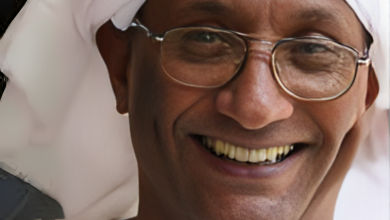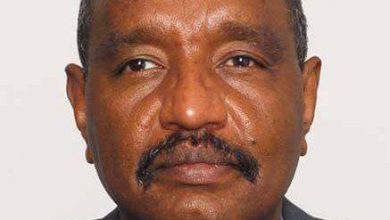Opinion
War on Sheep legs

Magdi El Gizouli
Bullets rain down, and shells fall across the cities and rural areas of Darfur, severing the lifelines for people. This has created a significant gap in the regional livestock and meat market. Chad—or more precisely, foreign investments in Chad—did not hesitate to seize this opportunity. In recent months, cross-continental capital in Chad has been preparing to fill this gap by expanding the country’s livestock and meat exports. To this end, the company “Meat of Chad” was established, funded by the French bank BPI France, a government investment agency founded in 2012, and the company ARISE, which specializes in building and operating industrial zones. ARISE itself is a partnership between the African Finance Corporation (a multilateral organization founded in 2007 through an agreement among 40 African countries, excluding Sudan, with most of its capital coming from the private sector) and the African Transformation and Industrialization Fund, a private investment portfolio established in 2021 and based in Abu Dhabi. Despite its name, it is neither a fund nor African.
The fever of Emirati investments in Africa is burning hot, almost fiery, as the UAE has become the fourth largest investor on the continent over the last decade, following China, the European Union, and the United States, with investments exceeding $60 billion. Individuals from UAE ruling families control 12 ports across the continent, primarily through government-owned companies, most notably “DP World,” previously known as “Dubai Ports,” which is a subsidiary of “Dubai World,” the investment arm of Dubai’s government, the richest of the seven emirates. The Abu Amama Port project on the Red Sea coast, with a cost of $6 billion, was a strategic part of this plan, though fate had other ideas.
For comparison, in October 2022, DP World signed a $250 million contract to develop the Port of Dar es Salaam in Tanzania in exchange for a 30-year monopoly on two-thirds of its operations. The contract remained hidden from the Tanzanian public until July, when news reached civil society organizations, sparking fierce opposition on the grounds that it threatened “national sovereignty.” Representatives from these organizations filed a petition with Tanzania’s High Court, questioning the legality of the agreement, which was dismissed on August 10. Tanzanian authorities even briefly detained dozens of protesters for organizing unauthorized demonstrations. DP World representatives, however, stated that the company expects to triple the port’s revenue over the next decade.
The chain of ports wholly or partially controlled by DP World on African coasts, according to a recent report (June 2023) by the Italian Institute for International Political Studies, spans the continent and includes several Egyptian ports such as Port Said, Arish, Sharm El Sheikh, and Algiers, as well as ports in Djibouti, Berbera (Somalia), Maputo (Mozambique), Coega (South Africa), Pointe-Noire (Congo-Brazzaville), Kamsar (Guinea), and Dakar (Senegal).
What does the UAE want with all these ports?
There’s a profit-driven explanation. DP World is one of the world’s largest port operators, with its influence primarily measured by the number of standard containers (20-foot containers) it handles annually. By this metric, DP World ranks fifth globally, processing 46.1 million containers in 2022, 14 million of which passed through Jebel Ali Port, the hub of this lucrative network. DP World’s revenue in 2022 amounted to $17.3 billion, a 59% increase from 2021, compared to $5.6 billion in 2018. These massive revenues are generated by the efforts of 100,000 workers from 180 countries. Jebel Ali Port is the largest and most advanced in the Middle East and among the top ten globally. The UAE’s goal, or more accurately, that of its ruling families, is to cement this position by enhancing and expanding this network, creating an empire that never sets, with Jebel Ali serving as a high-tech, secure outpost for the booming trade between Asia and Africa, generating continuous profits.
What does this profitable network have to do with sheep in the Kordofan and Darfur wilderness?
This intricate trade network extends all the way to places like the Zalingei wilderness and its market, what was once called the African interior in colonial literature. Its profits stem from “the sweat of Bangladeshi workers” and sheep in the Kordofan and Darfur wilderness, where the livestock survives on water and grazing, tended by herders who sling AK-47s over their shoulders, hoping one day to afford a luxury car. Their role in this profit cycle is to deliver sheep to Gulf markets at low prices, enabling Bangladeshi workers to perform their jobs efficiently. This issue was recently discussed by Professor Marc Defield in the “African Political Economy Review” (November 1, 2023), focusing on the collapse of the central state in both Sudan and Somalia. Observers once feared Sudan would become like Somalia; today, choosing between Somalization and Sudanization is a matter of taste and flavor.
According to Professor Defield, the core issue is the rising demand for livestock imports in the Gulf, from around $250 million in 1979 to $1.4 billion in 2020, alongside the population growth in the Gulf, from about 15 million in 1979 to 57 million in 2020. To meet this need, Somalia and Sudan’s livestock exports to the Gulf increased from $40 million in 1979 to approximately $550 million in 2020 (see chart). The peak of these exports came in 2017, when the two countries collectively exported 9.5 million head of livestock to the Gulf, surpassing Australia and Europe, providing 80% of the Gulf’s livestock imports—twice the exports of France, Canada, and Australia, the world’s largest livestock exporters. This has created a dependency between the growth of Gulf cities and livestock exports from Sudan and Somalia, as 90% of the Gulf’s animal protein needs are supplied by a supply chain starting in places like Kordofan and Darfur.
The elements of this chain, aside from people, are water, grazing land, and intense sunlight, concentrated in the form of animal meat. This live meat represents a cheap form of protein storage that is relatively easy to transport. Just as oil is a concentrated energy source for industry, cheap meat is the concentrated energy source for the human labor needed for industrial urbanization. Thus, a conditional relationship has developed between armed herding in Kordofan and Darfur and urban growth in Gulf countries that are food-scarce. This, perhaps, is the root of the war economy now manifesting as a massive blood-soaked front, stretching from the Horn of Africa to the interior of what Karl Marx called “primitive accumulation,” and the livestock trade between the Horn of Africa and the Gulf is the blood tie that sustains the population growth in Gulf cities, from 10 million in the 1970s to 60 million today, much of it urban labor concentrated in imperial cities like Dubai. From the perspective of livestock, most of the increase in Sudan and Somalia’s exports has been in sheep, which by the mid-2000s made up 70% of total livestock exports.
This objective connection between the growth of labor in the Gulf and the growth of sheep exports from Somalia and Sudan is achieved through the duality of consumption and destruction: increased consumption in Gulf cities and the destruction of everything that hinders commercial sheep herding under its scorching sun. The necessary expansion of sheep herding requires, by its very nature, the displacement of entire communities that occupy the land for farming, a process that can only occur by disrupting the exchange relationships between pastoral and agricultural communities and subjecting them to a logic of domination. This dynamic, to some degree, is the economic imperative of the war in Darfur, which is now spreading across all the geography required for livestock production and export in Sudan, from the Zalingei area to the export outlets on the Red Sea, like Abu Amama: the militarization of commercial herding and the forced displacement of people by armed force.
In this light, the tragedy of organized killing, displacement, and impoverishment inflicted on the Fur and Masalit communities in Darfur is a carbon copy of what befell the Bantu in southern Somalia—victims of “primitive accumulation” on the bloody front of capitalist displacement. Both the Fur, Masalit, and Bantu relied on subsistence farming and the production of vegetables and fruits in pockets that were not fully penetrated by the market’s influence, and their modest herds of sheep were not tied to a profit chain that stretched all the way to the prosperous Dubai. The conflict between the warring parties—Somalis versus Bantu, and Arabs versus Zaghawa—is, at its core, an economic contradiction between two complementary forms of agricultural production in response to an insatiable demand for cheap meat in Gulf oil cities post-1973. This contradiction has opened a bottomless profit abyss for livestock traders, their armed patrons, intermediaries, and those controlling the Red Sea ports.
Let’s Burn This City Down
The colonial state, the “state of 1956,” as described by the thinkers of the Rapid Support Forces (RSF), was built to secure Nile water and produce cash crops from a vast agricultural basin that includes Al-Jazira and the Gedaref plains. The state apparatus, including the capital city Khartoum, was a translation of the needs of this agricultural model and its social order—educating its workforce, shaping its culture, and providing services. This apparatus was built on a contradiction that eventually strangled itself: on the one hand, extracting taxes to encourage the growth of a wage labor market based on irrigated agriculture, and on the other, the strategic neglect of subsistence economies in peripheral regions under the authority of tribal administration and indirect rule, in order to keep labor costs low.



